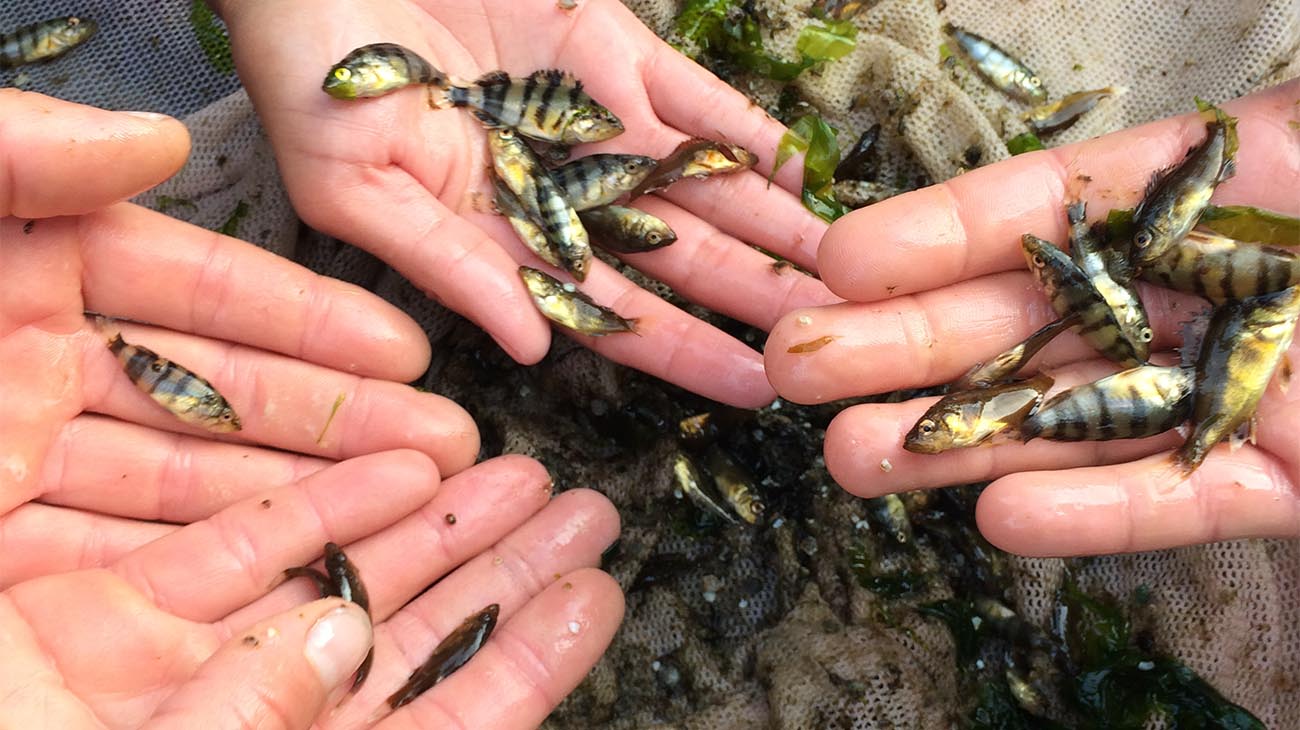Shake, shake, shake. On the deck of a boat a mile from shore, a biologist shakes a tubular role of green plastic mesh, called a SMURF, that’s just been pulled out of the ocean. Another biologist, wetsuit clad with a snorkel mask pushed up onto her forehead, pours water over the mesh tube.
As the rhythmic shaking and pouring continues, all eyes are trained on the mesh bag in anticipation. Shake, shake. Pour.
Suddenly, several tiny fish fall from the SMURF onto a net spread below.
Their oversized, yellowish eyes take up almost half the length of their head. Microscopic scales mottled with greens, browns and silvers gleam in the morning light. With a few more shakes, a couple more fall out. They are baby Cabezon, likely only a few months old.
If fish were like a bank account, the money flowing in and out must be kept in balance
Cabezon are a popular fish in both the recreational and commercial fisheries here in Oregon. This means that their populations have to be tracked carefully in order to ensure catches are maintained at sustainable levels. If fish were like a bank account, the money flowing in and out must be kept in balance. But with fish, the money flowing in is in the form of births. In other words, how many baby fish survived in a given year, and how many adults were caught or died of old age? The challenge is estimating total amounts in the fish bank account. There’s no monthly statements, and scientists are quite literally counting things they can’t readily see and that keep moving around. Here’s where statistics and mathematical modeling comes in (hang with us here).
Stock assessments are the scientific building blocks upon which fisheries rules are made
The foundational component of tracking the fish bank account comes in the form of something called a stock assessment. Stock assessments are the scientific building blocks upon which fisheries rules are made. They give rule makers information about how the fish bank account is doing. In the case of Cabezon, both biological data (e.g., fish length, etc.) and fisheries data (e.g., how many were caught and the age or size of the fish caught, etc.) are used in assessments.
Sometimes it’s hard to get enough data for the assessment that represents all different ages and sizes of fish. For example, juvenile fish data in nearshore coastal waters is limited. Because small juvenile fish are not caught in the fishery, this data needs to be collected by researchers in fishery independent surveys. Collecting and ageing tiny fish that are smaller than a person’s thumb is challenging. In order to understand how fast young Cabezon grow, the ODFW Marine Reserves Program and Oregon State University are collecting data to help answer this question. Ultimately, this information is used in stock assessments to provide more accurate estimates of how quickly fish grow.
The rate of fish growth helps scientists understand and estimate how fast the fish bank account will grow in the future. Juvenile fish data collected during our SMURF surveys was recently provided to stock assessors for the 2019 Cabezon stock assessment. Currently, the marine reserves monitoring program is the only program collecting these juvenile fish data in Oregon.
Currently, the marine reserves monitoring program is the only program collecting these juvenile fish data in Oregon
Back aboard the deck of the boat the biologists continue shaking and pouring. Once they are sure all the baby fish are out of their hiding spots, they grab a fresh SMURF that is stowed at the back of the boat. The wetsuit clad biologist readjusts her mask and balances on the boat’s gunwale. She rolls backwards into the ocean below with a splash. She’s handed the new SMURF and begins swimming to a buoy bobbing several yards away. She clips the new SMURF to the mooring line attached to the buoy, where it will sit for two weeks waiting for new occupants to find it.
Want to see more about our SMURF surveys over the years? Watch this video taken from sea during a SMURF research trip, and explore some of our past news posts:
